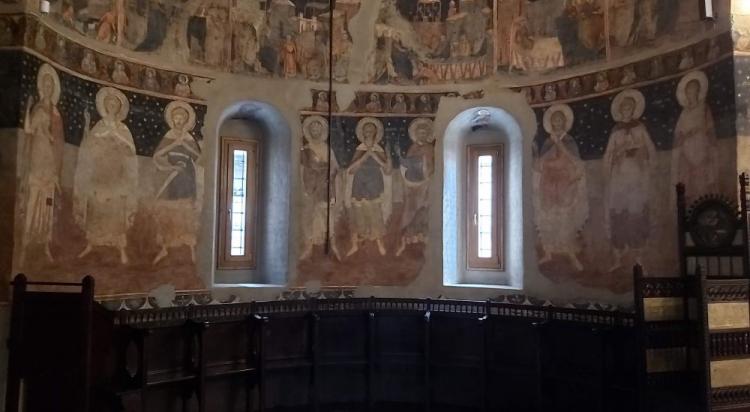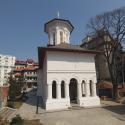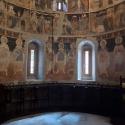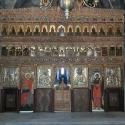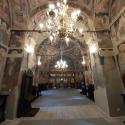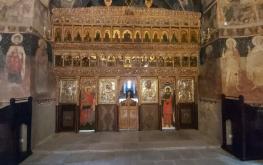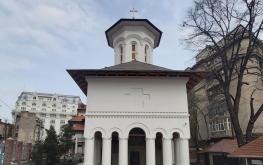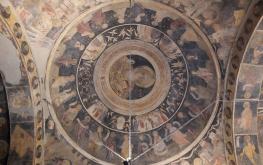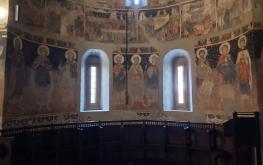The interior painting seems to be the original painting of the early 18th century, but its author is not known. Some interventions to the painting made in 1843 when the church was painted 'fresh start' are mentioned in the documents of that time, in 1944 it was washed and restored by painter Gheorghe Popescu.
As one can see in the image below, at the beginning of the restoration action, started in 2018, the painting was partially destroyed and completely covered by a black layer of soot which made it impossible to exhibit it for worshipers and church visitors.
After cleaning the walls, the original painting, partially destroyed, of invaluable value, was discovered, executed in a warm chromatic range, dominated by ocher and burnt umber shades.
In the nave, on the North and South wall, images of standing saints were brought to light in the lower tier, and in the upper tier scenes of the life and passions of our Lord Jesus Christ.
On the Western wall of the pronaos one can notice the votive painting depicting the ktetors of the church. In the church porch, on the East wall, on both sides of the entrance door, scenes representing the Last Judgement are depicted. Above the door, the throne of Hetoimasia, with Adam and Eve kneeling. Hell is painted to the right of the door and Heaven to the left.
At the base of the North Calotte, the Round Dances are painted - Original Illustration of Psalms 148-149. The right calotte is painted with the face of Saint John the Baptist.


